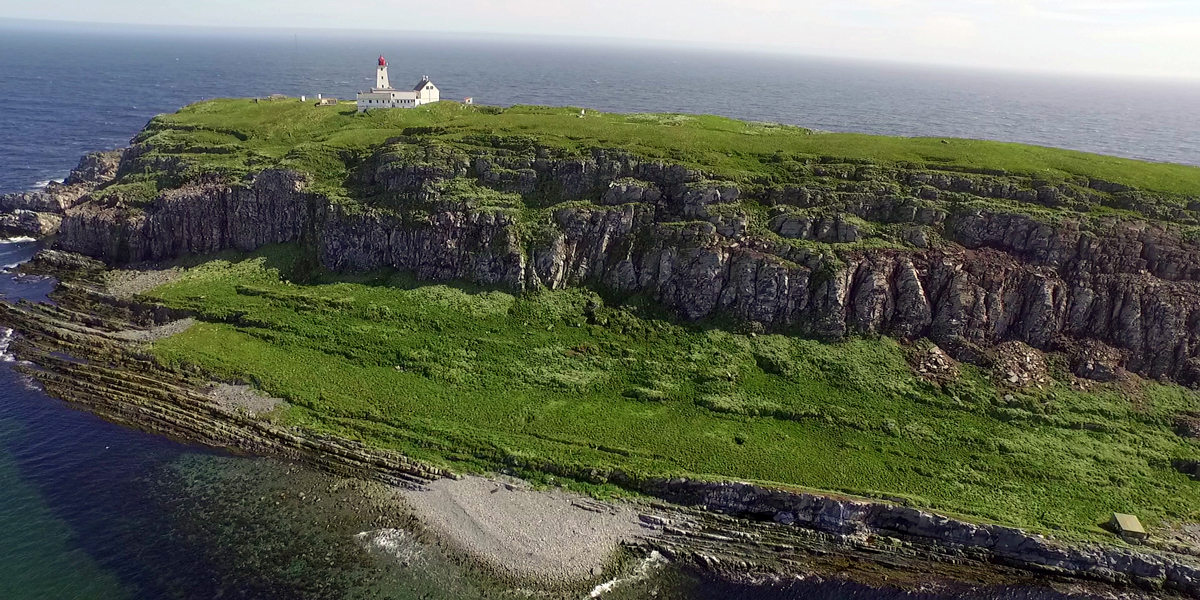Kittiwake. Photo Helge M. Markusson, The Fram Centre
You can follow this spectacular project twenty-four-seven online.
NRK Nature has 15 remote-controlled cameras on the cliff, in addition to a cineflex, a camera drone and 2 cameras with a large zoom to capture the everyday life and drama at the bird cliff Hornøya.
By following life and death in the sea bird community, we will show the vulnerability of nature and learn more about an ecosystem in change.
During a few hectic summer months the sea birds will court, nest and hatch eggs. Their goal is to see a new generation of sea birds leaving the island in the fall. However, the most important task; the bird babies have to survive the summer. At Hornøya we will be following puffins, kittiwakes, guillemots, polar guillemots, razorbills, shags, white tailed eagles, theist, black-backed gulls, ravens and herring gulls.
The bird parents will not only be balancing eggs on narrow shelves on the bird cliff, but also make sure they find enough food for the kids and themselves. They must also get rid of annoying neighbors. Birds of prey like white tailed eagles, ravens, black-backed gulls and herring gulls are looking for dinner for themselves and their own kids.
The birds at Hornøya are accustomed to seeing humans, the bird watchers have been there for more than 30 years, and their presence does not seem to affect the birds notably and hence it is possible to film them up close.

Five weeks and multiple transmissions
On the net: NRK will be streaming from the bird cliff twenty-four-seven (nrk.no/fuglefjellet) during the five weeks of the project. You can choose between eight different video streams; 7 nesting sites and 1 mix with all the different cameras. You can also chat with other viewers, and ask questions about the birds.
TV: Once a week you can watch highlights and reports from the last week at NRK1, in primetime, and at NRK2 you can watch "slow-TV" 5 days a week, late at night (9PM GMT to 11PM). These transmissions will also be streamed at nrk.no/fuglefjellet. On demand from june 15. https://tv.nrk.no/programmer/natur
Love, life and death
The bird cliff might seem chaotic, but it is like a village where everyone has his own place. Throughout the nesting season our cameras will be following the bird parents from when they lay their eggs, until the baby birds are hatched. Each species has its special characteristics: The egg of the guillemot has a shape that makes it roll in circles, and hence avoid falling off the shelf. The puffin will only lay one egg, but the parents must catch fish that is rich in protein for the one baby to grow up. The kittiwake might have to fly all the way to Svalbard to find food.
But it is a long journey, and leaving their babies all alone may be hazardous. All these birds, the guillemot, the puffin and the kittiwake have enemies that also live on the cliff; predators such as black-backed gulls and ravens. Also the white tailed eagle will come visiting unexpectedly at any time.
Endangered species
NRK and the bird watchers at Norwegian Institute of Nature research (NINA) want to use Hornøya as an example to learn more about the serious decline in the population of the sea birds all over the North Atlantic. The scientists are not sure why this is happening, but both the climatic changes and human activity are mentioned as possible causes.
Contact info:
Executive producer: Terje Dale, terje.dale@nrk.no. +47 91532430
Project manager: Nils Arne Sæbø, nils.arne.sabo@nrk.no +47 90144179
Production manager: Bjørg Langeland, bjorg.langeland@nrk.no +47 934 96 759
Social media and net: Jenny Duesund, jenny.duesund@nrk.no +47 416 70 090
Producing unit: NRK Nature, Norwegian Broadcasting Corp. N-5020 Bergen, Norway
NINA:
Media contact, Norwegian Institute of Nature research (NINA): Bjørg Bruset, bjorg.bruset@nina.no +47 90012763